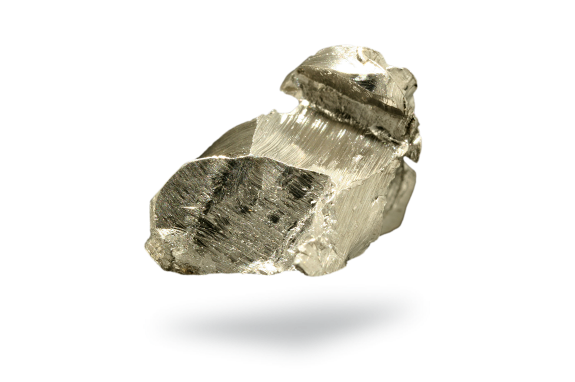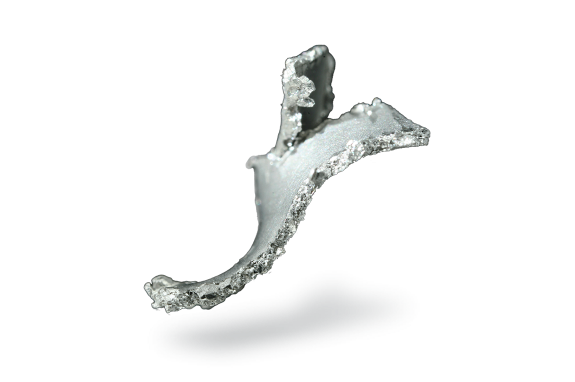Platinum
It is difficult to date the discovery of platinum. The first samples were brought back from Ecuador by the Spaniard Ulloa in the middle of the 18th century. Small silver-like objects were made by the native Americans from a gold-platinum alloy – hence the name platina, the diminutive Spanish word for silver.
Watson identified platinum metal in 1750 and Wollaston, who also isolated palladium and rhodium in 1803 and 1804 respectively, investigated its chemistry.
Properties
- An attractive silver-white metal that is malleable, ductile and very heavy.
- Generally hardened by alloying with iridium.
- Its coefficient of thermal expansion (9 x 10-6% per °C) is very close to that of certain glasses, to which it can readily be welded.
- Catalytic properties.
- A high melting point and good resistance to corrosion.
Applications
- The largest application for platinum is in car catalysts, where platinum is used in combination with palladium and, occasionally, rhodium.
- Jewelry accounts for some 30% of platinum consumption.
- High melting point and good resistance to corrosion, platinum is used in laboratory ware.
- Platinum, alone or alloyed with rhodium, is used as a drawing die material in the fabrication of high-grade glass, as used, for example, in the manufacture of electroluminescent diodes.
- Platinum electrodes are used in fuel cells and platinum alloy coatings in computer hard discs.
- Platinum gauzes are used as a catalyst in the production of nitric acid and ammonia as well as in the synthesis of cyanhydric acid. It is also employed in the pharmaceutical industry as a selective hydrogenation agent.
- Since the emergence of exchange traded funds (ETFs), platinum has increasingly used as an investment vehicle.
Recycling
Due to its value, platinum tends to be recycled quite readily. By far the majority of the recycling volumes come from the recycling of spent automotive catalysts with old jewellery and electronics making up the remainder. In addition to end-of-life recycling, significant volumes of platinum are used in closed-loop production processes for example in the glass manufacturing where old platinum equipment is recycled and turned into new equipment.


